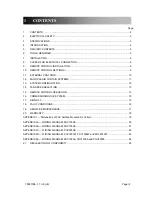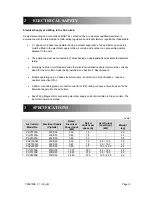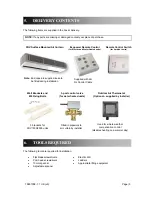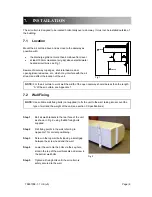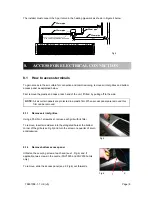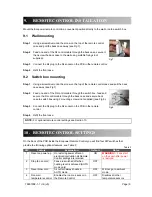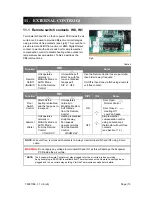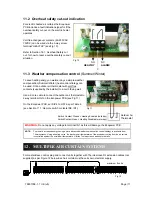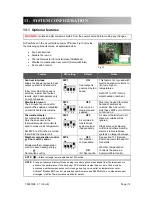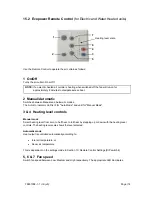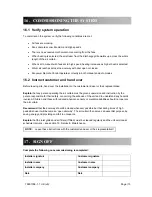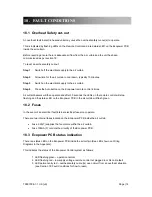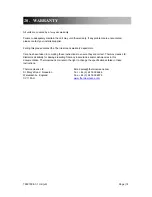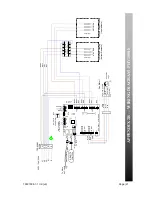
T9901008-1-1 UK (v9)
Page | 7
Fig 3
7.3 Ceiling
Suspension
M10 threaded rods (not supplied) are used to suspend the
unit from the ceiling.
Suspend the unit from the ceiling as follows:
Step 1
Screw the threaded rods into all of the holes in the
top face of the unit as shown in Fig 3.
Step 2
Fit M10 locking nuts (not provided) to prevent the
rod rotating and coming away from the casing.
Step 3
Secure each suspension rod to a suitable structure that can support the weight of the unit (see
section 3: Specifications for weights).
7.4 LPHW
Models
For LPHW models ensure that water isolation valves are fitted in the flow and return pipework
adjacent to the air curtain and connected correctly as shown in the diagram in Appendix 1.
For the design of the water pipework system and pump, water flow rates and pressure drops for
maximum heat output of the air curtain are given in Table 2 below.
Air Curtain
Water Flow Rate
(l/min at 82/71°C)
Water Pressure Drop
(kPa)
PHV1000W, 2-row (12kW)
15.6
5.0
PHV1500W, 2-row (18kW)
23.4
9.5
PHV2000W, 2-row (24kW)
31.2
14.7
Air Curtain
Water Flow Rate
(l/min at 60/40°C)
Water Pressure Drop
(kPa)
PHV1000W, 3-row (12kW)
8.6
9.7
PHV1500W, 3-row (18kW)
12.9
10.0
PHV2000W, 3-row (24kW)
17.1
18.3
NOTE:
Do not screw hanging rods too far in as they
could interfere with internal components.
WARNING:
It is the sole responsibility of the installer to ensure that the fixing locations and
suspension system used are suitable for the air curtain being installed.
NOTE:
Water Pressure Drop is across the flow and return pipework to the air curtain and includes for the
coil fitted inside the unit and the valve fitted in the heating pipework to the unit.
Water flow rates and pressure drops at different water temperatures can be calculated using the
Thermoscreens coil calculation programme. Visit the Thermoscreens website for details.
Table 2


